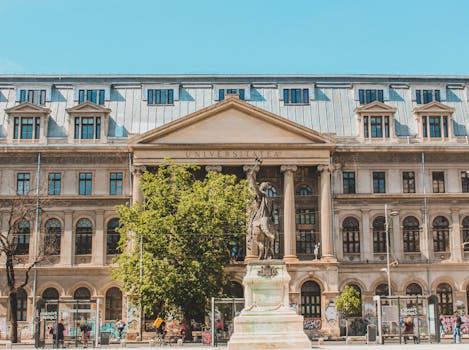Traveling Through Time: How Europe’s Historical Heritage Shapes Modern Lifestyles in 2025 – Europe Travel
Traveling Through Time: How Europe’s Historical Heritage Shapes Modern Lifestyles in 2025. Europe, with its vast and diverse historical heritage, has always been a fascinating continent to explore. From the Colosseum in Rome to the Eiffel Tower in Paris, every corner of Europe is filled with landmarks that tell the story of its rich past. But Europe’s historical heritage is not just about preserving the past; it also plays a significant role in shaping modern lifestyles in 2025.
Introduction to Europe’s Historical Heritage
Europe’s historical heritage is a treasure trove of cultural, architectural, and artistic wonders. The continent is home to some of the world’s most famous museums, galleries, and historical sites, attracting millions of visitors every year. From the Renaissance to the Industrial Revolution, Europe’s past has been marked by significant events, movements, and figures that have left an indelible mark on its present. As we travel through time, we can see how Europe’s historical heritage continues to influence modern lifestyles in various ways.
The Impact of Historical Heritage on Modern Lifestyles
One of the most significant ways in which Europe’s historical heritage shapes modern lifestyles is through architecture. Many of Europe’s cities are filled with historic buildings, landmarks, and monuments that have been beautifully preserved and restored. These structures not only serve as a reminder of the past but also provide a unique and inspiring backdrop for modern life. For example, the historic city centers of Florence, Venice, and Prague are popular tourist destinations, but they are also thriving hubs of modern activity, with trendy bars, restaurants, and shops nestled among the ancient buildings.
In addition to architecture, Europe’s historical heritage also influences modern lifestyles through art and culture. The continent is home to some of the world’s most famous art movements, including the Renaissance, Impressionism, and Cubism. These movements have had a lasting impact on modern art, with many contemporary artists drawing inspiration from the past. Furthermore, Europe’s rich cultural heritage is reflected in its music, literature, and film, with many modern artists and writers referencing historical events and figures in their work.
Preserving Historical Heritage for Future Generations
As we look to the future, it is essential to preserve Europe’s historical heritage for future generations. This can be achieved through a combination of conservation efforts, education, and innovation. Many European cities have implemented initiatives to protect and restore historic buildings and landmarks, while also promoting sustainable tourism practices that minimize the impact of visitors on these fragile environments. Additionally, museums and cultural institutions are using digital technology to make historical artifacts and exhibitions more accessible to a wider audience, ensuring that Europe’s rich cultural heritage continues to inspire and educate people around the world.
Conclusion
In conclusion, Europe’s historical heritage plays a vital role in shaping modern lifestyles in 2025. From architecture to art and culture, the continent’s rich past continues to influence the present in countless ways. As we travel through time, we can see how Europe’s historical heritage has been preserved, restored, and reinterpreted for modern audiences. By preserving this heritage for future generations, we can ensure that Europe remains a vibrant and inspiring continent, where the past, present, and future come together in a unique and fascinating way.



